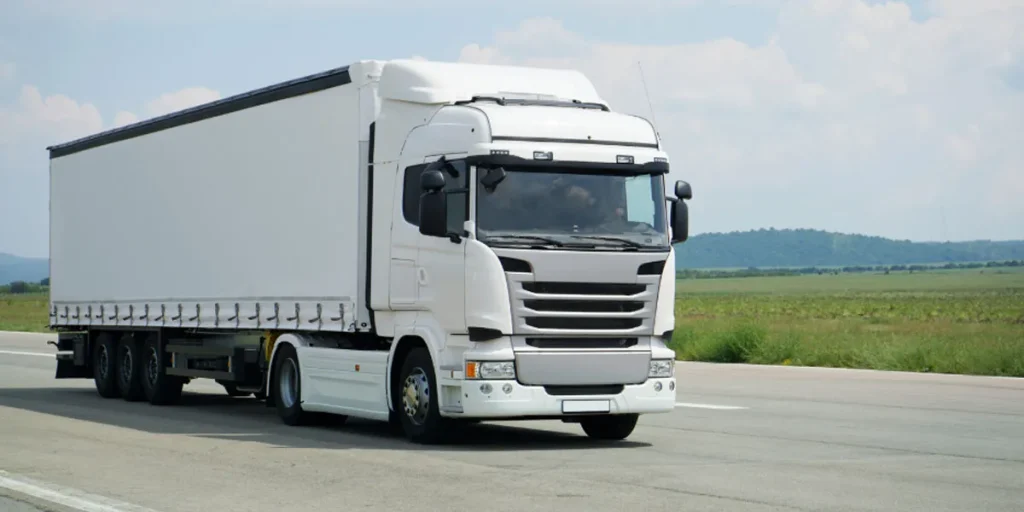The weight of a truck varies greatly, ranging from about 3,000 pounds for a small pickup to as much as 80,000 pounds when fully loaded for a semi-truck. The class of the truck dictates its weight category.
Trucks are essential tools in transportation, playing a pivotal role in logistics and the movement of goods.
From the nimble pickups that navigate urban streets to the massive semi-trucks crisscrossing the highways, each type of truck is designed to handle specific tasks and loads.
Knowing the weight of a truck is crucial for safety, compliance with transportation laws, and determining the right vehicle for freight needs.
This knowledge ensures efficient operation and helps avoid legal penalties for overloading.
Truck weights are classified, making it easier for drivers and companies to select the right truck for their services while adhering to road safety regulations.

Ton-truth Unveiled
The Ton-Truth Unveiled reveals the hefty numbers behind truck weights. Understand the gravity behind these moving titans.
Learn how they vary from one another. Clear facts dispel the fog around the true mass of trucks.
Weights Of Different Truck Classes
Trucks come in various sizes, each with a weight that corresponds to its class. Here’s a quick look into different classes:
- Class 1: Light trucks – up to 6,000 lbs.
- Class 2: 6,001 to 10,000 lbs.
- Class 3: 10,001 to 14,000 lbs.
- Class 4: 14,001 to 16,000 lbs.
- Class 5: 16,001 to 19,500 lbs.
- Class 6: 19,501 to 26,000 lbs.
- Class 7: 26,001 to 33,000 lbs.
- Class 8: Heavy trucks above 33,001 lbs.
Measuring Truck Weight
Truck weight is measured in specific terms that reflect different stages of load:
| Term | Description |
|---|---|
| Curb Weight | The weight of an empty truck with standard equipment. |
| Gross Vehicle Weight (GVW) | The total weight of the truck and its cargo. |
| Gross Vehicle Weight Rating (GVWR) | The maximum safe weight a truck can handle, including cargo. |
| Gross Combined Weight Rating (GCWR) | A truck plus its attached trailers. |
Using these terms, we assess the truck’s weight capability and compliance with regulations.
Each truck has a GVWR defined by the manufacturer. Exceeding it impacts safety and legality.
Truck Categories Explained

Understanding the weight of trucks is essential in many industries. Across highways and worksites, trucks come in various sizes and capacities.
This classification system helps in distinguishing their roles and capabilities. Let’s dive into the different categories and discover what sets them apart.
Light-duty Trucks
Light-duty trucks are the starts of the road. They’re robust enough to handle daily tasks yet small enough to maneuver easily through traffic.
These trucks typically weigh between 0 and 6,000 pounds, fitting perfectly into Class 1 of truck classification.
Often seen on suburbs and city streets, light-duty trucks serve as personal vehicles or business fleets for carrying light cargoes. Here are common light-duty trucks:
- Pickup trucks for work and play
- Panel vans that carry light loads
- Mini trucks for compact spaces
Medium-duty Trucks: Hauling The Middle Ground
Medium-duty trucks are the all-rounders. Weighing between 6,001 to 26,000 pounds, these trucks fit within Classes 2 through 6.
They balance between the agility of light-duty trucks and the power of their heavy-duty counterparts.
Medium-duty trucks are ideal for small businesses and regional hauling. Examples include:
| Class | Weight | Examples |
|---|---|---|
| Classes 2-3 | 6,001 – 14,000 lbs | Large pickups, ambulances |
| Classes 4-6 | 14,001 – 26,000 lbs | Box trucks, flatbeds |
Heavy-duty Trucks
Heavy-duty trucks are the behemoths of the transport world. These trucks weigh over 26,001 pounds and occupy Classes 7 and 8.
They are designed for the toughest jobs, hauling massive loads over long distances without a hiccup. Key members of this category include:
- Semi-trucks for cross-country hauls
- Concrete mixers for construction
- Garbage trucks for waste management
These trucks ensure goods move from coast to coast, powering the economy. Their robust engines and reinforced frames explain why they’re giants of the road.
Factors Influencing Truck Weight

Understanding how heavy a truck is involves more than just numbers on a scale. Various factors play a crucial role in determining the total weight of a truck.
From the materials used in its construction to the cargo it carries, each aspect contributes significantly to the overall mass.
Let’s explore the key elements that affect truck weight.
Chassis And Body Materials
The materials used in building the chassis and body greatly influence truck weight. Modern trucks often utilize a mix of steel and aluminum to balance strength and weight.
Some high-performance models may even include titanium or carbon fiber components.
The choice of material not only affects durability but also the payload capacity and fuel efficiency.
Payload Capacities
- Gross Vehicle Weight Rating (GVWR) – the maximum allowable total weight of a vehicle, cargo and passengers included.
- Tare Weight – the empty weight of the truck without payload or passengers.
- Net Payload – the difference between GVWR and tare weight, indicating actual cargo capacity.
Understanding these capacities is vital for safety and compliance with transportation regulations.
Additional Equipment And Customizations
Trucks may carry additional equipment for specific jobs. Items such as cranes, liftgates, and refrigeration units add to the total weight.
Customizations like sleepers, toolboxes, and specialized storage can also increase mass.
Every extra piece of equipment must be factored into the total truck weight to ensure safe operation and legal compliance.
Legal Limits And Road Safety
Road safety depends heavily on knowing how much trucks weigh. Trucks must follow certain weight limits. These limits protect bridges and roads from damage.
They also make sure trucks can stop safely. Every country has rules for truck weights. Not following these rules can lead to accidents.
National And International Regulations
Trucks must not be too heavy. Countries set their own weight limits. In the USA, the legal weight for an 18-wheeler is approximately 80,000 pounds.
The European Union also has strict rules. Trucks in Europe must usually weigh less than 40 tonnes. Other countries follow similar regulations. Limits can change for different roads or areas.
International rules matter too. Trucks that cross borders must respect weight limits in all countries. Special permits are needed for heavy loads. This makes sure roads stay safe for everyone.
Implications Of Overloading
Overloading a truck is bad. It can cause many problems:
- Damage to infrastructure: Heavy trucks can break roads and bridges.
- Risk of accidents: Overloaded trucks are harder to control. They take longer to stop. This can lead to crashes.
- Fines: Drivers and companies may have to pay money if they break weight rules.
- Reduced equipment life: Too much weight wears out trucks faster. This means they need more repairs.
Authorities use weigh stations to check trucks. If a truck is too heavy, it must remove some load. This keeps roads safe for all of us.
Weighing Stations And Compliance
Understanding the importance of Weigh Stations and Compliance is crucial when discussing how heavy a truck can be.
Every truck must meet specific weight limits for safety on the road. Weighing stations play a key role in enforcing these regulations.
Trucks that exceed the weight limit can cause damage to infrastructure and pose safety risks. Let’s explore the significance of these stations and the technology used for weight monitoring.
The Role Of Weigh Stations
Weigh stations are checkpoints along highways where trucks’ weights are verified. Authorities use weigh stations to ensure trucks do not exceed legal weight limits.
Trucks that are too heavy are not allowed to continue until their weight is within legal limits. This helps to prevent road damage and keep everyone safe.
- Protect highways from excessive wear and tear
- Promote road safety by preventing accidents
- Enforce legal compliance among trucking companies
Technology In Weight Monitoring
Advanced technology makes weight monitoring quick and effective. Sensors and scales built into the road measure a truck’s weight as it drives over.
A truck’s weight data is captured in seconds, making the process efficient. This information helps enforce legal weight limits. Here are some technologies used:
| Technology | Function |
|---|---|
| Weigh-in-Motion (WIM) | Measures trucks’ weight while they move at highway speeds |
| Static Scales | Measures trucks’ weight when they stop on the scale |
| Automated License Plate Recognition (ALPR) | Identifies the truck for weight and compliance history |
These technological advancements ensure accurate weight measurement and compliance with the law.
They also save time for both truckers and monitoring station personnel.
Impacts On Infrastructure And Environment
The mass of a truck does more than just get cargo from point A to point B. This weight plays a significant role in how trucks interact with the world around them.
From the stress exerted on roads to the fumes released into the air, understanding these impacts is essential.
Road Wear And Maintenance Costs
Trucks are heavy hitters on highways. Their substantial weight causes significant road wear. This wear leads to more maintenance requirements.
Local governments often struggle with these growing maintenance costs. Wear and tear from heavy trucks can lead to:
- Potholes forming on road surfaces
- Rapid degradation of bridges
- Increased need for road resurfacing
Roads must support heavy loads daily. Sturdy materials and frequent repairs come at a hefty price.
Taxpayer money often funds these expenses, showing a direct connection between truck weight and public spending.
Fuel Consumption And Emissions
Heavier trucks use more fuel. This increased consumption has a double-edged sword effect.
It leads directly to higher operational costs and more greenhouse gas emissions. Both factors have considerable environmental implications. Key points include:
| Truck Weight | Fuel Efficiency | Emissions |
|---|---|---|
| Lighter Trucks | Higher Efficiency | Lower Emissions |
| Heavier Trucks | Lower Efficiency | Higher Emissions |
As trucks burn through more fuel, their carbon footprint grows. This poses challenges for environmental protection efforts.
It also affects air quality, wildlife habitats, and climate change. Governments and industries aim to balance the efficiencies of transport with the health of our planet.
FAQs About the Weight of a Truck
What Is The Average Weight Of A Truck?
The average weight of a truck can vary widely, ranging from about 15,000 to 70,000 pounds.
Lighter trucks like pickups average around 15,000 pounds, while semi-trucks can weigh up to 35,000 pounds when empty and 70,000 pounds with a full load.
How Does Truck Weight Affect Fuel Efficiency?
Truck weight directly impacts fuel efficiency. The heavier the load, the more energy the engine must expend to move, typically leading to reduced miles per gallon.
Lighter trucks tend to have better fuel efficiency than fully loaded or heavier models.
What Is The Legal Weight Limit For Trucks?
In the United States, the maximum legal weight limit for trucks on federal highways is 80,000 pounds.
This includes the weight of the vehicle plus cargo. However, individual states may have different regulations for local roads.
Can Trucks Exceed Weight Limits?
Trucks can exceed weight limits by obtaining special permits when necessary.
These are typically issued for oversized or overweight loads and may require extra fees, specific routes, and additional safety measures during transport.
Conclusion
Understanding the weight of a truck is crucial for numerous logistical and safety considerations. Truck weight varies widely depending on the type and load.
With this knowledge, drivers and companies can ensure compliance with regulations and maintain road safety. Remember, an informed approach to vehicle weight contributes to efficient and responsible transportation.
Resources:
https://www.tdi.texas.gov/tips/safety/dumptruck.html
https://www.customtruck.com/an-in-depth-look-at-dump-trucks-and-how-to-choose-the-right-one/
